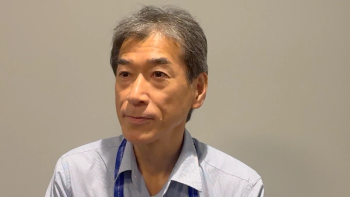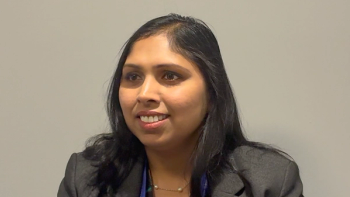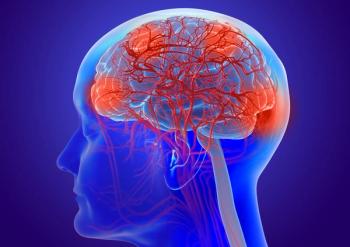
Oncology NEWS International
- Oncology NEWS International Vol 16 No 12
- Volume 16
- Issue 12
RT/temozolomide raises possibility of cure in glioblastoma
With the combination of radiation therapy and temozolomide (Temodar), some patients with glioblastoma multiforme are now surviving more than 4 years, according to updated results from a randomized phase III trial
LOS ANGELESWith the combination of radiation therapy and temozolomide (Temodar), some patients with glioblastoma multiforme are now surviving more than 4 years, according to updated results from a randomized phase III trial presented at ASTRO's 49th annual meeting (abstract 3).
"In 2005, our group demonstrated for the first time that concomitant treatment with temozolomide and radiation [plus adjuvant temozolomide] improved median and 2-year survival, compared with radiation alone, in glioblastoma," said lead author René-Olivier Mirimanoff, MD, of the University of Lausanne Medical Center, CHUV, in Switzerland (N Engl J Med 352:987-996, 2005). "However, it was not known, of course, at that time whether the survival advantage would remain with longer follow-up."
The joint EORTC-NCIC trial enrolled adults with newly diagnosed, histologically proven glioblastoma who had a good performance status, had not previously received chemotherapy or radiation therapy, and were no more than 6 weeks out from biopsy or resection.
Patients received 6 weeks of radiation therapy to a total dose of 60 Gy, either alone or with added concomitant temozolomide (75 mg/m2 daily) and adjuvant temozolomide (150 to 200 mg/m2 daily on days 1-5 of a 28-day cycle, for six cycles).
For each patient, the investigators determined recursive partitioning analysis (RPA) classIII (best prognostic features), IV (intermediate), or V (worst)and methylation status of the promoter of MGMT, a gene that codes for a repair enzyme. Methylation silences the enzyme, increasing susceptibility to chemotherapy and likely to radiation therapy, Dr. Mirimanoff explained.
In the updated analysis, the median follow-up was 61 months among the 573 patients. "With time, the advantage conferred by the addition of temozolomide to radiation vs radiation alone remained highly statistically significant at 2, 3, and 4 years," he said.
The 4-year rate of overall survival (the trial's primary endpoint) was 12.1% in the radiation/temozolomide group, compared with 3.0% in the radiation-only group (HR 0.63, P < .0001), he reported.
Some 15% of patients had an RPA class of III, 52% had a class of IV, and 33% had a class of V. The benefit of radiation/temozolomide over radiation alone was greatest among patients in the RPA class III group, Dr. Mirimanoff said.
The 4-year overall survival rate in the RPA class III group was 28.4% with the combination vs 6.8% with radiation therapy only (HR 0.54, P = .01). The survival benefit was more modest in the RPA class IV group (11.3% vs 3.3%; HR 0.62, P = .0001) and the RPA class V group (6.1% vs 1.0%; HR 0.69, P = .01).
About 45% of patients had methylation of the MGMT promoter, and these patients also fared better when treated with the combination, Dr. Mirimanoff said. In this group, the 4-year rate of overall survival was 22.1% with radiation/temozolomide, compared with 5.2% with radiation alone (HR 0.51, P = .04). Among patients with unmethylated MGMT, the respective values were 11.1% vs 0.0% (HR 0.66, P = .035).
"One can say that with this study, we could confirm that the survival advantage conferred by the addition of temozolomide to radiation in glioblastoma remains significant and, I think, clinically relevant for longer follow-up," he said.
Cure possible?
Dr. Mirimanoff commented that it is unclear if the combination is leading to cure in certain cases or just prolonging survival, but some patients from the pilot study are now alive after 5, 6, and even 7 years. "There is hint of plateau if you look at the curves, but I just don't know if these patients are cured," he said.
He noted that a significant proportion of patients have survived at least 4 years with radiation/temozolomide, "but, of course, those were mainly restricted to two groupspatients in RPA III and patients whose MGMT was methylated."
When asked if he would recommend the combination for patients with unmethylated MGMT, he said, "I think for the time being, given the fact that even the patients who have no silencing still have some benefit, I would, until we know better, treat those patients as well."
Future research
Although prognosis is still quite poor with the combination, "temozolomide and radiation should remain the standard against which any new treatment or new combination should be compared in the future," Dr. Mirimanoff said.
Noting that "continued research and progress are badly needed," he called attention to two related directions for future research: increasing the dose of temozolomide (currently being studied in a joint EORTC-RTOG trial) and adding targeted agents to the temozolomide/radiation combination, for example, the antiangiogenic agents cilengitide (an investigational integrin antagonist) and bevacizumab (Avastin) (see ASTRO abstracts 89-91).
Articles in this issue
almost 18 years ago
Third-line single-agent cetuximab ups overall survivalalmost 18 years ago
Modern multislice CT propels pancreas imaging forwardalmost 18 years ago
Sorafenib gets ok for liver canceralmost 18 years ago
Celgene to acquire Pharmionalmost 18 years ago
Novacea halts ASCENT-2 trialalmost 18 years ago
Brachytherapy as effective in younger as in older menalmost 18 years ago
MMA not harming patientsalmost 18 years ago
Kinase inhibitor may prevent RT-induced lung injuryalmost 18 years ago
FDA approves lower starting dose for dasatinib for CMLalmost 18 years ago
Encouraging Avastin results in glioblastoma multiformeNewsletter
Stay up to date on recent advances in the multidisciplinary approach to cancer.



















































































